Why Content Gap Analysis is Important
Content gap analysis is the process of identifying the missing content pieces that could help your website rank higher in search engine results, attract more visitors, and better serve your audience’s needs. Essentially, it fills the holes in your content strategy, ensuring you’re not missing out on crucial opportunities to capture your audience’s attention.
Here’s a quick rundown of why content gap analysis is essential:
- Boosts SEO Performance: Finding and filling content gaps helps improve your search engine rankings.
- Improves User Experience: Meeting your audience’s needs keeps them engaged and coming back.
- Outperforms Competitors: Identifying gaps allows you to cover topics your competitors might have missed.
- Maximizes ROI: Creating relevant content ensures your resources are used efficiently.
In short, a well-executed content gap analysis can lead to more organic traffic, better user engagement, and ultimately, higher conversion rates.
My name is Jeffrey Castillo, also known as “digitaljeff.” With over 20 years of experience as a tech entrepreneur and award-winning filmmaker, I’ve helped numerous brands identify their content gaps and improve their SEO strategies. In the following sections, we’ll dive into the steps to conducting an effective content gap analysis and set your content strategy on the path to success.

What Is a Content Gap Analysis?
A content gap analysis is the process of evaluating your content to identify areas where it falls short compared to your competitors or audience expectations. This analysis helps pinpoint opportunities to improve your content, making it more comprehensive, up-to-date, and aligned with user intent. By addressing these gaps, you can improve your SEO performance, increase user engagement, and provide more value to your audience.
The Process of Content Gap Analysis
Performing a content gap analysis involves several key steps:
- Identify Keyword Opportunities: Start by pinpointing keywords that are underperforming or that your competitors rank for but you don’t. Tools like Semrush and Ahrefs can help you find these keywords.
- Analyze Search Engine Results Pages (SERPs): Examine the top-ranking content for your target keywords to understand what makes them successful. Look at factors like content length, structure, and the type of media used.
- Research Customer Needs: Conduct surveys or use tools like Google Forms to gather insights directly from your audience. Ask them about their biggest challenges and what kind of content they find most helpful.
- Audit Your Existing Content: Take inventory of your current content and assess its performance. Identify which pieces are outdated, thin, or not aligned with user intent.
Importance of Content Gap Analysis
Content gap analysis is crucial for several reasons:
- Meet Search Intent: Ensuring your content aligns with what users are searching for improves user experience and boosts SEO visibility.
- Stay Relevant: Keeping your content up-to-date with industry trends and topics your audience cares about makes it more valuable and engaging.
- Gain a Competitive Edge: By analyzing your competitors, you can identify key opportunities to outperform them and capture a larger share of the market.
For example, if you find that your competitors have detailed guides on a topic you only briefly mention, you have a clear opportunity to create more comprehensive content to fill that gap.
In the next section, we’ll dive into the specific steps you need to take to conduct a thorough content gap analysis and optimize your content strategy.
Types of Content Gaps
Identifying content gaps is crucial for improving your content strategy. Here are the main types of content gaps you should be aware of:
Recency
Content that’s outdated can hurt your credibility. Especially in industries, information needs to be current. If your content is more than two years old, it’s time for an update.
Example: Imagine you run a tech blog. An article on “Top Smartphones of 2021” won’t be useful in 2023. Updating it to “Top Smartphones of 2023” can drive more traffic.
Thoroughness
Sometimes, your content might lack depth. Essential subtopics may be missing, or the information might be too thin. Comprehensive content sets you apart as a helpful resource.
Example: A blog post on “Healthy Eating” that doesn’t cover essential subtopics like “Meal Planning” or “Nutritional Information” can leave readers wanting more.
Readability
Content should be easy to read and engaging. Clear, well-structured content is better for both people and search engines. Use short sentences, bullet points, and headers to improve readability.
Example: Compare a wall of text to a well-organized article with headings, bullet points, and short paragraphs. Which one would you prefer to read?
Format
Different search intents may require different content formats. If search results show mostly text and your audience prefers video, you have a format gap. Matching the preferred format can improve your rankings.
Example: If users are searching for “How to Bake a Cake,” a video tutorial might be more effective than a text-only recipe.
Expertise
Content written by experts carries more weight. Incorporating expert opinions can add credibility and value to your content.
Example: A financial advice blog post written by a certified financial planner will be more trusted than one written by an anonymous author.
Experience
Google’s E-E-A-T guidelines (Experience, Expertise, Authoritativeness, Trustworthiness) emphasize the importance of experience. Authentic experiences make your content more credible.
Example: If you review products, using them personally and sharing your experiences can make your reviews more trustworthy.
Identifying and addressing these content gaps can significantly improve your content’s performance. In the next section, we’ll dive into the specific steps you need to take to conduct a thorough content gap analysis and optimize your content strategy.
Why Perform a Content Gap Analysis?
Align with Search Intent
Search intent is the reason behind a user’s query. Understanding this helps you create content that meets their needs. When your content matches what users are searching for, it improves user experience and SEO visibility.
Example: If users search for “how to train a puppy,” they likely want step-by-step guides, not just general tips. By aligning your content with this intent, you can rank higher and attract more targeted traffic.
Stay Relevant
Relevancy is key. A content gap analysis helps you keep your content up-to-date with industry trends and topics your audience cares about. Search engines also favor fresh content.
Fact: Content that’s older than two years may no longer be accurate or relevant. Updating or adding new information can keep your content fresh.
Gain a Competitive Edge
Analyzing your competitors can reveal opportunities where you can outperform them. This could be in the form of covering topics they missed or improving on the quality of existing content.
Case Study: Macy’s used competitor analysis to identify keywords where they were underperforming. By creating better content for these keywords, they improved their search rankings and gained more traffic.
By performing a content gap analysis, you can ensure your content is both valuable and competitive. Next, we’ll explore the specific steps to take for conducting a thorough content gap analysis.
4-Step Content Gap Analysis
Identifying and filling content gaps is crucial for improving your SEO and meeting your audience’s needs. Here’s a simple, four-step process to guide you through a content gap analysis.
Identify Keyword Opportunities
Start by finding underperforming keywords. These are keywords where your content ranks lower than desired. Use keyword tools like Google Keyword Planner or Ahrefs to find these opportunities.
Next, look at competitor keywords. Identify keywords your competitors rank for but you don’t. This can reveal gaps in your content that you need to address.
Example: Macy’s used competitor analysis to identify keywords where they were underperforming. By creating better content for these keywords, they improved their search rankings and gained more traffic.
Analyze Search Engine Results Pages (SERPs)
Check the current rankings of your content. Analyze the top-ranking pages for your target keywords to understand what makes them successful.
Look for content improvements. Identify gaps in the top-ranking content. For example, if the top articles list “30 healthy vegan breakfast ideas,” you could create a post with “50 ideas,” offering more value.
Consider search intent. Understand why users are searching for these keywords. This helps you create content that meets their needs better.
Research Customer Needs
Gather customer feedback. Use surveys, interviews, and feedback forms to understand what your audience is looking for.
Conduct market research. This will uncover your audience’s pain points, questions, and needs. Tools like Google Forms can help you collect this data.
Use topic research tools. Tools like Semrush can help you turn general topics into specific content ideas. For example, if customers want more content on “home workouts,” you can generate detailed subtopics and ideas.
Audit Your Existing Content
Take a content inventory. List all your existing content and evaluate its performance. Use tools like Google Analytics to see which pages are performing well and which aren’t.
Analyze performance metrics. Look at traffic, engagement, and conversion rates to identify underperforming content.
Identify content gaps. Find topics and keywords that are covered inadequately or missing entirely. For example, if your fitness blog lacks beginner-friendly strength training content, that’s a gap you need to fill.
By following these steps, you can conduct a thorough content gap analysis and ensure your content strategy is robust and effective. Next, we’ll look at the tools you can use to aid this process.
Tools for Content Gap Analysis
To perform a content gap analysis effectively, you’ll need the right tools. These tools help you identify keyword opportunities, analyze existing content, and track performance. Here are some essential types of tools you should consider:
Keyword Tools
Keyword tools are crucial for finding what search terms your audience uses and identifying gaps in your content. Here are some popular options:
-
Google Keyword Planner: This free tool helps you find keywords related to your business and shows the search volume and competition level for each term.
-
Google Trends: Use Google Trends to see the popularity of specific search terms over time. This can help you identify trending topics and keywords.
Content Analysis Tools
These tools help you evaluate the quality and relevance of your existing content. They can identify which pieces are performing well and which need improvement.
- Google Search Console: This tool provides insights into how your site appears in Google search results and which queries bring users to your site.
Analytics Tools
Analytics tools track the performance of your content and provide insights into what works and what doesn’t. This data is essential for identifying content gaps and measuring the success of your efforts.
- Google Analytics: A must-have for any website, Google Analytics provides detailed reports on traffic, user behavior, and conversion rates. Use it to track how your content is performing over time.
By using these tools, you can conduct a comprehensive content gap analysis and ensure your content strategy is both effective and competitive. Next, we’ll discuss how to fill these content gaps and keep your strategy up-to-date.
How to Fill Content Gaps
Filling content gaps is crucial for optimizing your website and enhancing user experience. Here are three key steps to effectively bridge those gaps:
Develop a Plan
Before diving into content creation, have a clear plan. Start by pinpointing the gaps you’ve identified. Ask yourself:
- Do you need to create new content?
- Should you update existing material?
- Or is a combination of both required?
Organize your tasks in a project management tool like ClickUp or Asana. This helps keep track of what needs to be done, ensuring a systematic approach.
Pro Tip: Create a content brief for each task. This should include insights, suggested sections, and keywords to guide whoever is creating or updating the content.
Create New Content
When you find gaps that need new content, it’s time to start crafting. Whether it’s articles, videos, or infographics, ensure the content is engaging, informative, and meets search intent. Here’s how to get started:
- Identify the Topic: Use your keyword research to find relevant topics.
- Outline the Content: Structure your content with clear headings and subheadings.
- Write and Edit: Focus on clarity and readability. Short sentences and simple words work best.
- Add Media: Include images, videos, and infographics to make the content more engaging.
Example: If your fitness blog lacks beginner-friendly strength training content, create articles and videos covering basic exercises, proper form, and beginner routines.
Update Existing Content
Sometimes, you already have content that just needs a little boost. Updating existing content can be quicker and just as effective. Here’s what to do:
- Review Current Content: Look for outdated information, low readability, or missing sections.
- Add Value: Update the information, improve readability, and add new insights.
- Optimize for SEO: Ensure the content includes relevant keywords and meets search intent.
Example: If you have an article on “How to File for Divorce” that jumps straight to “Hire a lawyer,” consider adding intermediate steps. Include sections on initial considerations, necessary documents, and common questions.
By developing a plan, creating new content, and updating existing material, you can effectively fill content gaps and improve your website’s value to users.
Next, we’ll explore the tools you can use to streamline your content gap analysis process.
Measuring the Results
After filling content gaps, it’s crucial to measure the impact of your efforts. This helps you understand what’s working and what needs further improvement. Here’s how to do it:
Key Metrics
Key metrics help you track the effectiveness of your content gap analysis. Focus on:
- Traffic: Measure the number of visitors to your updated or new content.
- Engagement: Look at metrics like time on page, bounce rate, and social shares.
- Conversions: Track actions like sign-ups, downloads, or purchases.
- Rankings: Monitor changes in your search engine rankings for targeted keywords.
Analytics Tools
Use analytics tools to gather and analyze data:
- Google Analytics (GA4): Provides insights into traffic and user behavior. Steer to “Engagement” and then “Landing page” to see performance data.
- Semrush Position Tracking: Tracks keyword rankings and alerts you to changes.
Performance Tracking
Follow these steps to track performance effectively:
- Set Up Tracking: Use tools like GA4 and Semrush to set up tracking for your target keywords and pages.
- Create Filters: In GA4, filter data to focus on organic search traffic. This helps isolate SEO performance.
- Monitor Regularly: Check metrics monthly to see trends and make data-driven decisions.
Example: In GA4, click the “Reports” icon, steer to “Engagement,” and then click “Landing page.” Add a filter for “organic” under “Session medium” to see organic traffic data.
Comparing Data
Compare the data before and after your content updates:
- Before: Note the number of sessions, engagement, and conversions for a period (e.g., the last 28 days).
- After: Monitor these metrics for the same period after launching your new or updated content.
This comparison will show the impact of your content gap analysis.
Example: If your page on “Beginner Strength Training” had 500 sessions and a 2% conversion rate before updating, track these metrics for six months after the update to see improvements.
Adjusting Strategies
Based on your findings, you may need to:
- Optimize Further: Tweak content to better meet search intent or improve readability.
- Create More Content: If certain topics drive more traffic, consider expanding on them.
- Reevaluate Keywords: Use keyword tools to find new opportunities.
By continuously measuring and adjusting, you can keep improving your content strategy and SEO performance.
Next, we’ll dive into frequently asked questions about content gap analysis.
Frequently Asked Questions about Content Gap Analysis
What is the content of gap analysis?
Content gap analysis is the process of finding missing or underperforming content on your website that could better serve your audience. It involves comparing your existing content with what your target audience needs and what your competitors offer. The goal is to identify opportunities to create or improve content that aligns with user intent and the buyer’s journey.
Here’s a simple breakdown:
- Current State: Assess what content you already have.
- Desired State: Determine what content you need to meet your audience’s needs.
- Gap: Identify the differences between the current and desired states.
What are the three fundamental components of a gap analysis?
A gap analysis typically includes three main components:
-
Current State: This is a snapshot of where you are now. It includes your existing content, its performance metrics, and how well it aligns with your audience’s needs.
-
Future State: This is where you want to be. It outlines the content you need to create or improve to meet your audience’s expectations and achieve your business goals.
-
Gap Identification: This is the space between your current and future states. It highlights the specific areas where your content is lacking or underperforming.
What are the best tools for content gap analysis?
Several tools can help you perform a thorough content gap analysis:
-
SEMrush: This tool helps you find keyword gaps by comparing your website with competitors. It can show you which keywords your competitors rank for that you don’t.
-
Google Analytics: Use this to track the performance of your existing content. Look at metrics like page views, bounce rates, and time on page to identify underperforming content.
-
Ahrefs: Similar to SEMrush, Ahrefs can help you identify keyword opportunities and analyze your competitors’ content strategies.
-
Screaming Frog: This tool can crawl your website and provide a detailed audit of your existing content. It helps you see what content you have and how it’s performing.
-
Surveys and Feedback Tools: Tools like Google Forms or SurveyMonkey can help you gather direct feedback from your audience to understand their needs and preferences.
Using these tools, you can gather valuable insights to close content gaps and boost your SEO performance.
Next, we’ll conclude with some final thoughts on how to implement your content gap analysis findings to improve your SEO strategy.
Conclusion
Performing a content gap analysis is a vital step in refining your SEO strategy. By identifying and filling these gaps, you can significantly improve your content’s relevance, improve search engine rankings, and ultimately drive more organic traffic to your site.
At CheatCodesLab, we specialize in helping creators and businesses optimize their content strategies. Our comprehensive approach ensures that you’re not just creating content, but crafting valuable resources that meet your audience’s needs and outperform your competitors.
Why Choose CheatCodesLab?
1. Expert Guidance: Our team of SEO experts and content strategists will guide you through every step of the content gap analysis process, ensuring you identify the most critical gaps.
2. Customized Strategies: We understand that every business is unique. We tailor our strategies to fit your specific goals and audience, ensuring maximum impact.
3. Advanced Tools: We use cutting-edge tools and methodologies to perform thorough analyses and provide actionable insights.
4. Continuous Improvement: SEO is an ongoing process. We help you track your performance and make necessary adjustments to keep your content strategy aligned with evolving trends and audience needs.
Boost Your SEO with Content Strategy
A well-executed content strategy is the backbone of successful SEO. Here’s how a content gap analysis can improve your strategy:
1. Align with Search Intent: By understanding what your audience is searching for, you can create content that meets their needs more effectively.
2. Demonstrate Expertise: Filling content gaps allows you to showcase your knowledge and position yourself as an authority in your field.
3. Create Content Clusters: Comprehensive coverage of topics helps you build powerful content clusters, improving user engagement and boosting your SEO.
4. Stay Competitive: Regularly analyzing and updating your content ensures you stay ahead of competitors and maintain high search engine rankings.
Ready to Improve Your SEO?
Don’t let content gaps hold you back. Start your journey towards a more effective content strategy with CheatCodesLab. Visit our SEO services page to learn more and get started today!
By implementing these insights, you can create a robust content strategy that not only fills existing gaps but also anticipates future needs, keeping your content relevant and your audience engaged.
















